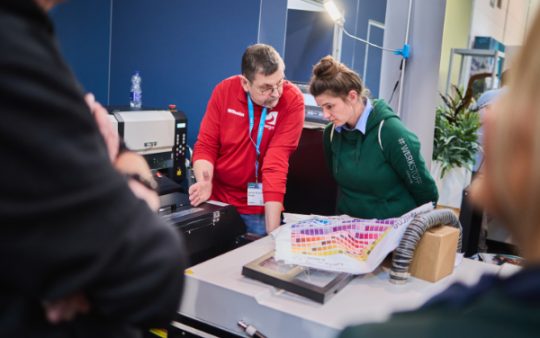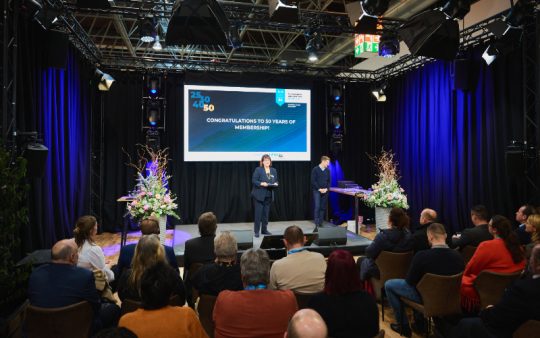Future opportunities for the printing industry

Published on 14.04.2020
Digital printing has been one of the major drivers of the print trade in recent years. Now, the industry needs to achieve its full potential by picking up on trends and fulfilling expectations.
The printing industry is in flux. Growth is currently slower than it used to because technology has already reached a very advanced level. Digital printing especially has brought many changes with it over the past 20 years. Now the technology needs to adapt to address different trends and themes of the future.
A particularly important area is printing on different materials. Whether we are talking about carpeting, wallpaper, room dividers or textiles, digital printing can be used to decorate almost any material there is. The Israeli company Velox, for example, has developed a process whereby even cylindrical packaging made of metal, plastic and glass can be printed directly. This so-called “direct-to-shape” method can be used for both small series and large production runs. The low-cost high-speed printing process offers a broad range of realistic colours and different methods of application.
Individualised products
“It is not so much about speed and size but rather that this is a very specialised product, and the important thing is to present it in a smart manner,” says Frazer Chesterman. As a printing industry expert, he sees consumer trends as being a major growth area for the industry. Consumer behaviour has changed: they want to buy into an experience these days. We are no longer merely talking about a rational purchase decision, but rather about identity, esteem and emotions. This results in a greater wish for individual personalised products.
Other social changes have also had an impact on the market. Generation Z has different expectations to its predecessors. Young adults born in 1995 or later are more digitally minded, more social, creative and constantly yearn for something new – including greater flexibility as regards working hours. At the same time, they have very high expectations of brands and products. It is far more difficult to gain their trust. Frazer Chesterman also sees a shift in current gender roles because women worldwide will be better trained in future, will have better jobs and make important retail purchase decisions. Other major topics are sustainability, the second-hand market, veganism, digitalisation and, above all, increasing confidence in brands.
Brand experience plays an ever greater role
These social changes also represent opportunities for the printing industry because it is well equipped to meet these challenges. It is easy to cater for the wish for greater personalisation, and the right solutions are also available for customers with standard wishes, thanks to the rapid processes available today. Brand experience also plays a key role. Differently printed materials with a special feel can help create special effects. Printed wallpaper or furniture transform their surroundings and create a unique experience for the customer. At the same time, printing is simple and cost-effective. The industry is also able to react to changed demands in the field of textiles. It can cater for the trend towards greater sustainability, for example, by using more environment-friendly processes like silk-screen, latex, UV or textile printing.
According to Frazer Chesterman, the greatest growth potential for the printing industry lies in the following three areas: packaging (corrugated and collapsible cardboard), textiles (clothing) and decorations (wall coverings for short-term wall pictures). Experts feel that the digital printing industry could grow by around five to ten percent in the future. Whereby, it is important that companies check their business strategies regarding their ability to cater for social trends and demands. Chesterman recommends companies address the customer directly and tell a good story in their brand communication. The printing industry is faced with a range of challenges that offer a whole range of exciting opportunities for future development.
Text: Emily Koslowski














